Last updated on January 22nd, 2024 at 13:32
Asking and finding out exactly how do espresso machines work is the first step to ensuring that you not only buy a great espresso machine but that you get your hands on the one that best fits your needs and requirements.
There is nothing worse than buying a great espresso maker, and only finding out a week later that it just does not meet your needs.
On the front end, it looks like a very simple machine: water goes in one end, heats up and comes the other as espresso right where you put the portafilter and out comes well-made, well brewed espresso.
That part in the middle gets complex and usually requires a mechanic or engineer to repair, fix or maintain it.
Are you ready to find out how these coffee makers work?
Yes – then pull up a chair and keep reading!
What Is An Espresso Machine?
Table Of Contents
An espresso machine is a machine that functions with water, heats it to almost boiling point of 195F to 205F (92C to 96C) and uses 9 bars of pressure, 130 PSI to pass the hot water over a bed of tightly compact finely ground coffee grounds to produce a shot of espresso with a good head of rich crema on top.
The first machine was invented by Angelo Moriondo in 1884 and used a steam based system to create an espresso. Later, Luigi Bezzera of Milan in 1901 made improvements to the machine and the ways it worked.
Further improvements by Francesco Illy invented the first automatic machine in 1933, which was powered by pressurized water instead of steam.
The functionality is by means of a pump of varying kinds which we will now discuss.
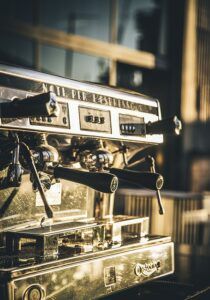
Read: Pump Vs Steam espresso machine
How Does A Manual Espresso Machine Work?
There is no one way in which an espresso machine works as there are different mechanisms and modus operandi of each one. Some are steam driven, others are pump bases with different types of pumps with the main types being rotary and vibration pumps.
More recently, there are air pumps. In addition, to this, there are hand-operated manual lever pumps to produce an espresso shot.

Read: How long does espresso last?
Steam Pressure Espresso Machines
Steam pressure espresso makers function where hot water is forced through a bed of coffee grounds using steam pressure. This is the original old school method of making an espresso that was patented by Angelo Moriondo.
This method is one that can make a wide range of espresso-based drinks and all types of coffee, but unfortunately, it makes a less than perfect espresso due to the limited pressure that is produced by the steam. 3 bars of pressure is not enough and only 1/3rd of the 9 bars of pressure required to make an espresso with the familiar rich crema on top that a quality espresso drink has.
This design type is what a lower-end, low-cost basic espresso machine will have. Also, due to being steam powered, the temperature required is difficult to control.
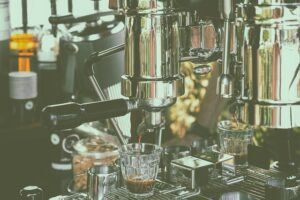
Pump Driven Espresso Machines
Piston based espresso machines operate by means of a solenoid which provides the mechanism by which the pump and espresso machine works. This type of machine is also often referred to as a vibratory pump. A magnet set within a metal coil moves back and forth at a rate of 60 times per second and pushes water up and through your coffee machine.
Due to the electromagnetic nature of these types of espresso machine, it is easier to control the pressure and helps you to get more consistency in your espresso brewing. This design and way of working is what most modern espresso machines use, even commercial machines.
There are various types and models that I will go into more detail about, most of which have little to do with the type of electric pumps in the machine.
What stands out is the ability to maintain and adjust the water pressure and temperature and get an excellent espresso shot that an espresso bar would serve. The consistency is literally perfect with a solenoid – vibratory motor based machine. You will just need to make your initial adjustments when you get your machine. Once you have them right on the sweet spot as you like it – no more adjusting, period!
Let’s talk about the different models of this particular domestic espresso machine.
Air Pump Driven Espresso Machines
This is a newer type that has emerged in the past few years. Air pump-driven espresso machines use, as the name suggests, compressed air. The air forces your hot water through your coffee grounds. The hot water is normally added manually from a kettle.
The compressed air is produced by either a hand pump, lever that is pulled, electric compression pump or cartridges. Often these are hand held and very portable, but not always.
An Aeropress is a fine example of this type.
They are lightweight, produce good results but tend not to last very long and only make one at a time.
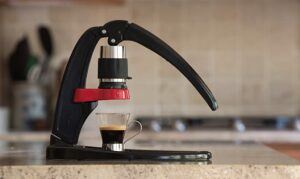
Heat Exchanger (HX) Model
These are a single boiler (SB) type which keeps the water at the temperature ready for steaming for your steam wand to steam your milk. The water that is used for brewing your espresso shot passes through a heat exchanger which is achieved without raising it to the same temperature of the steam.
Despite this, the temperature is still a little too hot for making a perfect shot of espresso. You need to run a cooling cycle by running the water for 4 to 6 seconds before brewing. Once you have run this cycle you can pull an espresso.
This type of espresso machine is good but as you can see there are issues regarding the brewing water and the temperature. One thing there are issues with due to the instability of the temperature is consistency in the end result.
This is why I do not advise the use of an espresso machine that uses a heat exchanger.
Single Boiler (SB) Espresso Machines
A single boiler professional semi-automatic espresso machines are only able to brew an espresso. You cannot steam milk at the same time. They do have a steam wand for heating cold milk, but that cannot be used at the same time as pulling a shot of espresso.
They have, as the name suggests, a single boiler. Their function is simple. The same boiler is used to heat your water is the same boiler that is used to heat the water required to steam your milk. The single boiler espresso machine that can perform both functions are called single boiler dual use (SB/DU).
Still, only being able to do one at a time is very inconvenient in your execution of espresso pull and your milk frothing process being operated one after the other.
Also, the milk frothing process is spoiled as the wands on this type of machine are prone to water leaking from it and into your milk.
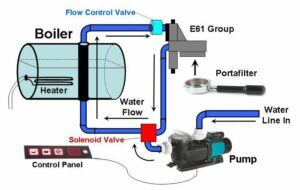
Dual Boiler (DB) Espresso Machine
Dual boiler espresso machines for home or commercial use have separate boilers for both brewing and steaming of your milk. These are the more expensive, high quality espresso machines that, thanks to their design permit you to have full control over the temperature of the water and the pressure of the water that comes out as well as the flow rate.
This type of machine has greater stability of temperature and is the type most commonly used in coffee shops.
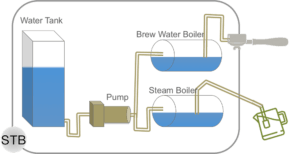
Espresso Machine Parts
There are various parts of an espresso machine which are:
Grouphead
Often spelled as two words, it is the part of the machine where water comes out and where you put your portafilter with ground coffee. Home espresso machines usually only have one grouphead whereas professional commercial espresso machines have up to 8 groupheads.
During the extraction of a shot of espresso, this is where your hot water is forced out. If you examine it closely, you will see that it has a shower head type of design. This is to give a good, even distribution of the pressurized water over your finely ground coffee grounds.
Portafilter
A portafilter, comes with a portafilter basket to achieve an even flow of your espresso and into your cup. The basket is a removable insert with a perforated design.
The portafilter, often called a group handle, is what contains your coffee grounds and attaches to the grouphead of your espresso machine and directs the hot water over and through your coffee puck.
The design can have one or two outlets for making one of two espressos at the same time.
A very specific bottomless portafilter exists that is used by baristas to analyze the quality of the espresso puck and to check for channeling.
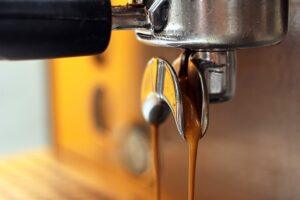
Knock box
Not quite a part of an espresso machine. This box is what you see baristas tap or knock their portafilters against to remove the coffee puck.
The Pump
As I mentioned above, most semi-automatic espresso machines and fully automatic machines function using a pump that draws and pumps water from the reservoir and into the heating chamber at a 9 bars high pressure.
Two types of pump exist: the vibratory solenoid motor or a rotary motor. By far, the vibratory motor is best – which I detailed above. The other is a rotary motor which has the drawback of having difficulties in maintaining the required pressure to produce a top class, top quality espresso.
Steam Wand
An important part of an espresso machine that is essential for you to make espresso-based milk drinks like latte, cappuccino, flat white, cortado and so on.
Reservoir
The reservoir is where your cold water is stored in your espresso machine. It is a good idea, a great idea that you use or connect as best a water filter or double filter your water externally prior to it entering your espresso machine.
Better quality water results in a better quality coffee. Also, it helps to maintain your machine and keep mineral deposits and limescale from building up.
Heating Chamber
The heating chamber or boiler is where the heating element is and contains a one-way valve to permit water to enter the heating chamber from the vibrational or rotary pump. It is where your hot water is produced.
Frequently Asked Questions About How Do Espresso Machines Work?
What Is The Difference Between Espresso And Coffee Machine?
An espresso machine heats and forces water under pressure through a bed of finely ground coffee with a brew time of 25 seconds. A drip coffee machine uses gravity and the weight of water which passes through a bed of medium-coarse ground coffee. Brew time is around 3 to 4 minutes.
An espresso machine allows you to make a wide range of coffee beverages, a drip coffee maker you are limited only drip coffee.
Is It Worth It To Get An Espresso Machine?
Yes, in my opinion, it is worth the investment in getting an espresso machine. When you get one, you won’t look back and will make significantly better coffee at home. You will end up making coffee that is Starbucks style and with time, you’ll make better coffee than what they do, and you’ll end up experimenting and making them healthier, with less sugar, fat and calories.
And you’ll end up saving a fortune on Starbucks coffee, savings that justify the cost of buying an espresso machine.
What Are The 3 Types Of Espresso?
There are dozens and dozens and dozens of different espresso drinks that you can make with an espresso machine.
There are three main types of espresso drinks are:
- Espresso.
- Ristretto.
- Lungo.
Using these as the base, you can make lattes, cortados, flat whites, red eye, caffe Americano, macchiatos, mochas, Breve and much more.
What Are The 3 Types Of Espresso Machines?
The three types of espresso machines are:
- Automatic.
- Semi-Automatic.
- Super-Automatic.
Is It OK To Drink Espresso Every Day?
It depends on how you and your body handles caffeine. Some people a single espresso every day is too much, while others can drink 2, 3 and more shots of espresso every day without a problem.
Is It Hard To Learn To Use Espresso Machine?
No, it is very easy to use an espresso machine. You will be able to make good coffee with your espresso machine as soon as it is set up.
The difficult part is perfecting your espresso shots and dialing them in. This part will take a little bit of getting use to and knowing how to get the best out of your premium quality beans. It is not difficult, just a matter of practice.
Frappé-Ing It All Up – How Do Espresso Machines Work?
It is clear after you read this how do espresso machines work. You have a better understanding of the mechanics and the anatomy of an espresso machine. It is my own advice that you point your eyes towards a dual boiler vibratory pump espresso machine as these are by far the best and will result in an espresso that is every bit as good, if not better, than your local coffee house.
On the subject of automation, semi-automatic or fully automatic, there is not much difference between the two nor advantage. I lean towards semi-automatics as I feel they are better and help you to develop your barista skills at home a lot more.
I advise avoiding super automatic machines as these are on par with vending machines, pushing a button and getting coffee. There is no variation and accounting for individual taste, which is where your home barista skills come in to play.
Join our fun, fab and highly informative coffee community on Facebook/Meta and start by sharing your coffee recipes, coffee creations, memes, jokes and inspiring quotes.

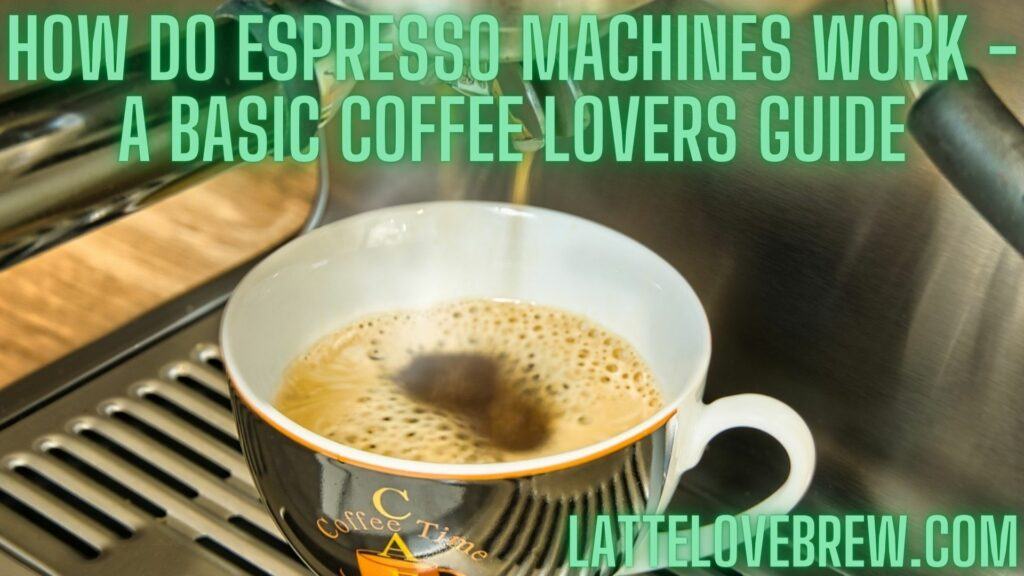

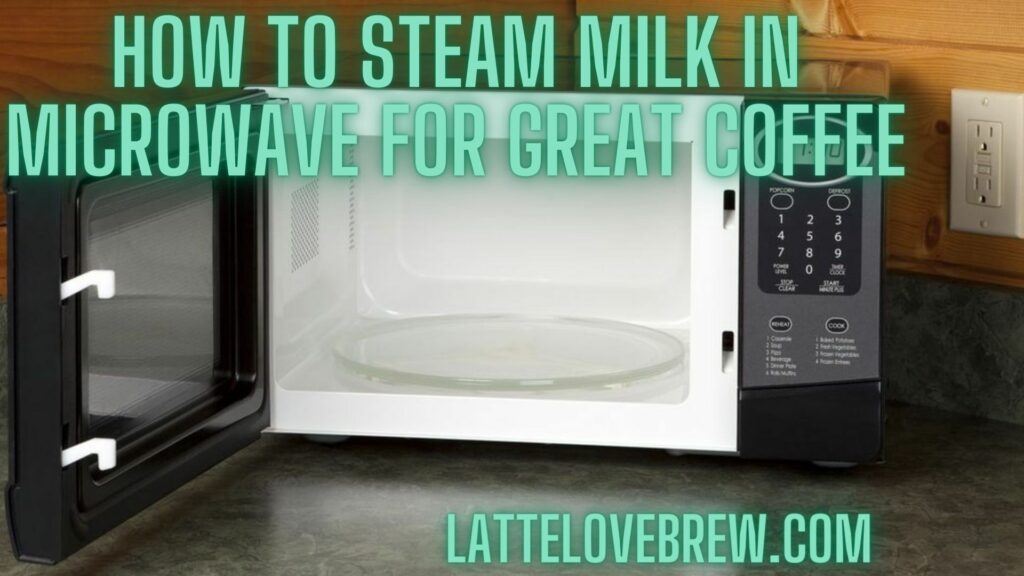

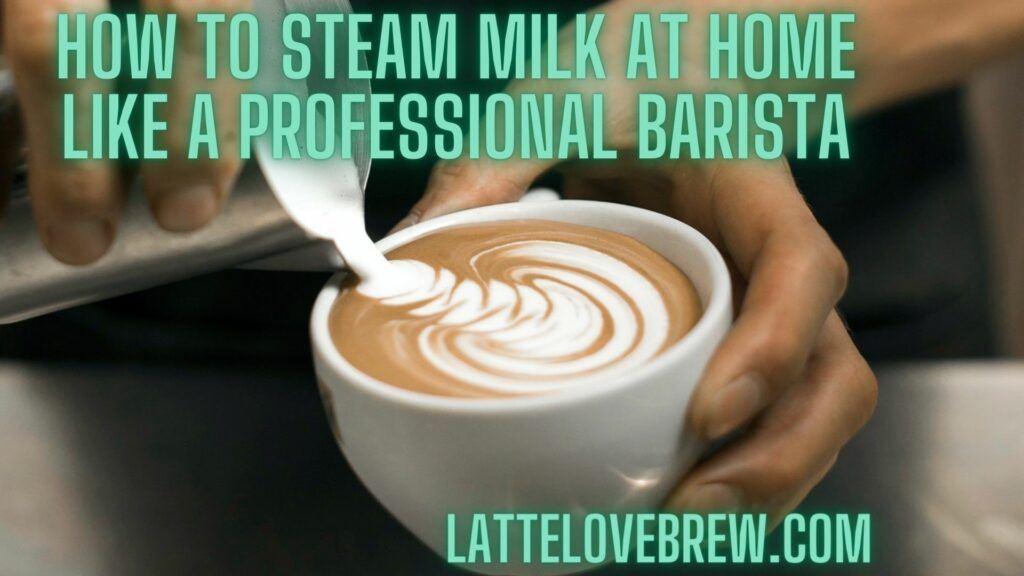
![[Recipe] How To Make Dunkin Iced Coffee At Home Like A Pro!](https://lattelovebrew.com/wp-content/uploads/2022/04/Recipe-How-To-Make-Dunkin-Iced-Coffee-At-Home-Like-A-Pro-1024x576.jpg)
